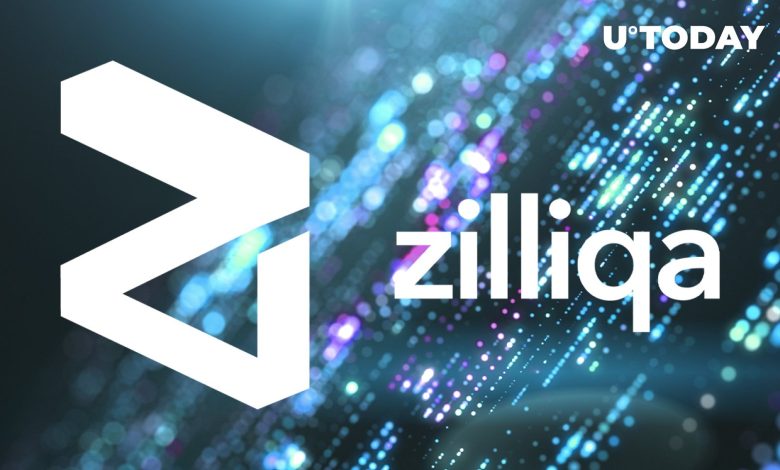Zilliqa (ZIL): The High-Throughput Blockchain

- Understanding Zilliqa’s innovative sharding technology
- Scalability solutions: How Zilliqa achieves high throughput
- Exploring the consensus mechanism of Zilliqa
- The role of smart contracts on the Zilliqa blockchain
- Comparing Zilliqa with other high-throughput blockchains
- Potential applications and use cases for Zilliqa (ZIL)
Understanding Zilliqa’s innovative sharding technology
Zilliqa’s innovative sharding technology sets it apart from other blockchain platforms by enabling high throughput and scalability. Sharding involves dividing the network into smaller groups called shards, each capable of processing transactions in parallel. This approach significantly increases the network’s capacity to handle a large number of transactions simultaneously, leading to faster confirmation times and lower fees.
By implementing sharding, Zilliqa can achieve a high throughput rate without compromising on security or decentralization. The network is designed to automatically adjust the number of shards based on the demand, ensuring optimal performance at all times. This dynamic scalability sets Zilliqa apart from traditional blockchains that struggle to maintain efficiency as the network grows.
One of the key benefits of Zilliqa’s sharding technology is its ability to scale linearly with the number of nodes in the network. This means that as more nodes join the network, the overall throughput increases proportionally. This scalability is crucial for supporting a wide range of decentralized applications and use cases, from high-frequency trading to decentralized finance.
In addition to its scalability, Zilliqa’s sharding technology also enhances security by isolating potential attack vectors within individual shards. This isolation prevents a single point of failure from compromising the entire network, making Zilliqa more resilient to malicious actors. Combined with its high throughput capabilities, this security feature makes Zilliqa an attractive option for developers looking to build secure and scalable decentralized applications.
Overall, Zilliqa’s innovative sharding technology represents a significant advancement in the blockchain space, offering a solution to the scalability trilemma of achieving high throughput, security, and decentralization. By leveraging sharding, Zilliqa has positioned itself as a leading platform for building the next generation of decentralized applications that require fast and secure transaction processing.
Scalability solutions: How Zilliqa achieves high throughput
Zilliqa is a blockchain platform that has gained attention for its high throughput capabilities. One of the key reasons behind Zilliqa’s ability to achieve high throughput is its innovative scalability solutions. These solutions are designed to address the scalability challenges that many other blockchain platforms face, such as slow transaction speeds and high fees.
One of the main scalability solutions that Zilliqa uses is sharding. Sharding involves dividing the network into smaller groups called shards, each of which is capable of processing transactions in parallel. This allows Zilliqa to achieve high throughput by increasing the number of transactions that can be processed simultaneously.
In addition to sharding, Zilliqa also utilizes a consensus mechanism known as practical Byzantine Fault Tolerance (PBFT). PBFT helps to ensure that transactions are confirmed quickly and securely, further contributing to Zilliqa’s high throughput capabilities.
Overall, Zilliqa’s scalability solutions, including sharding and PBFT, play a crucial role in enabling the platform to achieve high throughput. By addressing scalability challenges effectively, Zilliqa is able to offer a blockchain solution that is fast, secure, and efficient, making it an attractive option for developers and users alike.
Exploring the consensus mechanism of Zilliqa
Zilliqa utilizes a unique consensus mechanism known as Practical Byzantine Fault Tolerance (PBFT) combined with a Proof of Work (PoW) protocol. This innovative approach allows Zilliqa to achieve high throughput and scalability, making it a promising blockchain platform for various decentralized applications.
PBFT is a robust consensus algorithm that ensures the security and integrity of the network by requiring two-thirds of the nodes to agree on the validity of transactions. This helps prevent malicious actors from compromising the system and ensures that transactions are processed efficiently.
In addition to PBFT, Zilliqa also incorporates a PoW protocol to prevent Sybil attacks and ensure a fair distribution of mining rewards. Miners must solve complex cryptographic puzzles to add new blocks to the blockchain, which helps maintain the network’s security and integrity.
By combining PBFT with PoW, Zilliqa is able to achieve high throughput and scalability without compromising on security. This consensus mechanism sets Zilliqa apart from other blockchain platforms and makes it an attractive option for developers looking to build decentralized applications that require fast and secure transaction processing.
The role of smart contracts on the Zilliqa blockchain
Smart contracts play a crucial role on the Zilliqa blockchain, enabling automated and trustless execution of agreements. These self-executing contracts are stored on the blockchain and automatically enforce the terms of the agreement when predefined conditions are met. Zilliqa’s high-throughput capability allows for a large number of smart contracts to be processed quickly and efficiently, making it an ideal platform for decentralized applications (dApps) that rely on smart contract functionality.
One of the key advantages of smart contracts on the Zilliqa blockchain is their scalability. Zilliqa’s sharding technology allows the network to process transactions in parallel, significantly increasing the throughput of the blockchain. This means that smart contracts can be executed more quickly and at a lower cost compared to other blockchains, making Zilliqa an attractive option for developers looking to build scalable dApps.
In addition to scalability, Zilliqa’s smart contracts are also highly secure. The blockchain uses a hybrid consensus mechanism that combines proof-of-work (PoW) with practical Byzantine fault tolerance (pBFT) to ensure the integrity of the network. This makes it extremely difficult for malicious actors to manipulate the outcome of smart contract executions, providing users with a high level of confidence in the platform.
Overall, smart contracts are an integral part of the Zilliqa blockchain, enabling developers to build decentralized applications that are scalable, secure, and efficient. With its high-throughput capability and focus on security, Zilliqa is well-positioned to become a leading platform for the next generation of blockchain applications.
Comparing Zilliqa with other high-throughput blockchains
When comparing Zilliqa with other high-throughput blockchains, it is important to consider various factors that set it apart from the competition. While there are several blockchains that claim to offer high throughput, Zilliqa stands out for its unique approach to scalability and security.
- One of the key differences between Zilliqa and other high-throughput blockchains is its use of sharding technology. This allows Zilliqa to process transactions in parallel, significantly increasing its throughput.
- Another important factor to consider is Zilliqa‘s focus on security. By using a hybrid consensus mechanism that combines proof of work with practical byzantine fault tolerance, Zilliqa is able to achieve a high level of security without compromising on scalability.
- Additionally, Zilliqa has a growing ecosystem of decentralized applications (dApps) that leverage its high-throughput capabilities. This makes it an attractive option for developers looking to build scalable and secure applications on the blockchain.
In conclusion, while there are other high-throughput blockchains on the market, Zilliqa sets itself apart with its innovative approach to scalability and security. Its use of sharding technology, hybrid consensus mechanism, and growing ecosystem of dApps make it a strong contender in the blockchain space.
Potential applications and use cases for Zilliqa (ZIL)
Zilliqa (ZIL) has a wide range of potential applications and use cases due to its high-throughput blockchain technology. This scalability allows for various industries to benefit from its fast transaction speeds and secure network. Some of the potential applications and use cases for Zilliqa include:
- Decentralized Finance (DeFi): Zilliqa can be utilized for various DeFi applications such as decentralized exchanges, lending platforms, and stablecoins. Its high throughput allows for efficient trading and lending activities.
- Tokenization: Zilliqa can be used for tokenizing real-world assets such as real estate, art, and commodities. This can help in increasing liquidity and accessibility to traditionally illiquid assets.
- Gaming: The high throughput of Zilliqa makes it suitable for gaming applications where fast transaction speeds are crucial. It can be used for in-game asset trading, digital collectibles, and decentralized gaming platforms.
- Supply Chain Management: Zilliqa’s secure network can be leveraged for supply chain management applications to ensure transparency and traceability of goods. This can help in reducing fraud and improving efficiency in the supply chain.
- Healthcare: Zilliqa can be used for storing and managing healthcare data securely. Its high throughput can facilitate the sharing of medical records between healthcare providers while maintaining patient privacy.
Overall, Zilliqa’s high-throughput blockchain technology opens up a world of possibilities for various industries to leverage its scalability and security for innovative applications and use cases.



